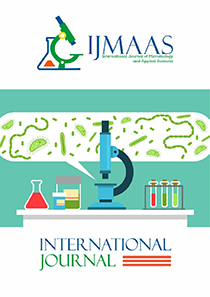Antibiotic Sensitivity Pattern and Resistance Genes of Campylobacter and Vibrio Species Associated with Sea Foods Sold in Port Harcourt Metropolis
Vol. 3, Issue 2, 2024
KEYWORDS
Campylobacter, Vibrio, Antibiotic resistance, resistance genes, Sea foods, food safety standards/regulations
Abstract
Campylobacter and Vibrio species are common foodborne pathogens associated with seafood consumption and their antibiotic resistance is a growing concern worldwide. This study investigated the antibiotic sensitivity pattern and resistance genes of Campylobacter and Vibrio species associated with Oysters (Crassostrea gasar), Shrimps (Penaeid Shrimps) and Prawns (Penaeus monodon). Seafood samples (360) were purchased from vendors in three major markets in Port Harcourt over a period of one year. The antibiogram of Campylobacter and Vibrio species isolated were determined using the disc diffusion method while Resistance genes were detected using the Polymerase chain reaction (PCR) and DNA sequencing. The result indicates that most of the Campylobacter and Vibrio species isolated from Prawns, Shrimps and Oysters were 100% resistant to Ceftazidime (CAZ), Cefuroxime (CRX) and Cloxacillin (CXM), the isolates showed 11– 100% sensitivity to Augmentin, 70-100% to Gentamycin, 73-100% to Ceftriaxone, 76-100% to Nitrofurantoin and 100% to Ofloxacin. Except Campylobacter jejuni and Vibrio mimicus that does not possess CTX-M gene and Campylobacter coli and Vibrio alginolyticus which does not possess blaTem gene, all the Campylobacter and Vibrio isolated possessed antibiotic-resistance genes such as blaTem, SHV and CTX-M highlighting the potential risk associated with the consumption of sea foods contaminated with these bacteria. This study therefore emphasizes the need for stringent hygienic practices during handling, processing, storage, and in distribution of seafood as to prevent the risk of foodborne illnesses associated with Campylobacter and Vibrio species. The fact that the transfer of resistance gene in these isolates between the aquatic environments and humans through handling and consumption of seafood pose a serious hazard to public health, continuous surveillance and adherence to food safety standards/regulations to safeguard consumers’ health must be sustained.
Current: Vol. 4, Issue 1, 2025

Call for papers
The International Journal of Microbiology and Applied Sciences warmly welcome your valuable articles for publication.
